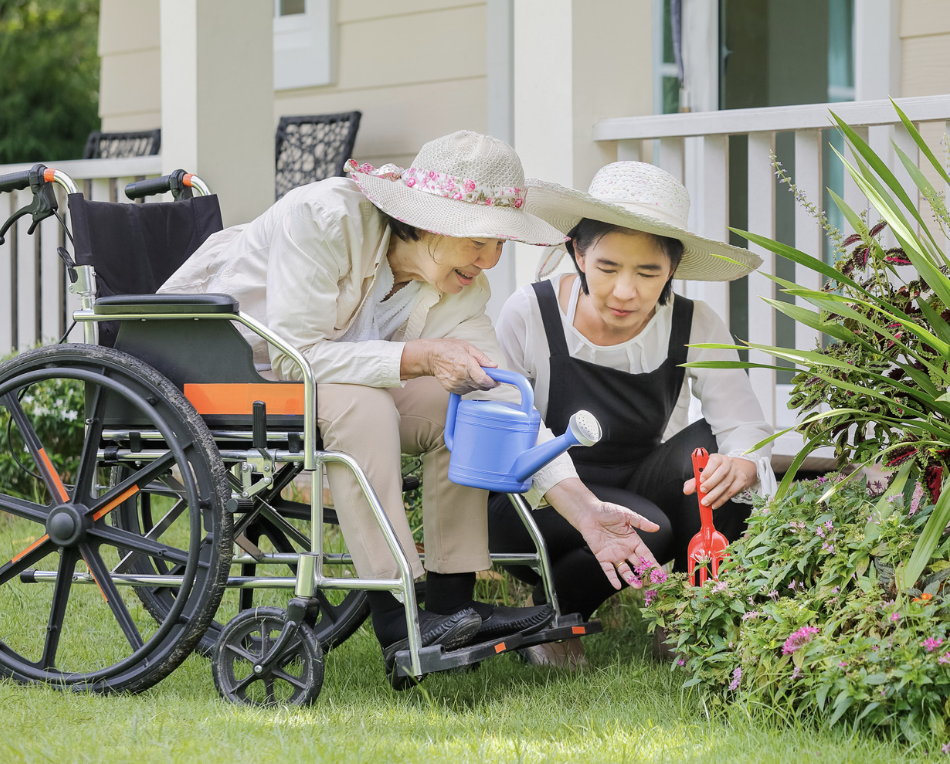Home Sweet Home: What Are Your Plans To Age In Place?
April 20, 2022

It’s been long assumed that most people want to grow older living in the community rather than moving to an assisted living facility or some other institutional setting (though remember, as we posted recently, “aging-in-place” often necessitates outside support and communal efforts to be successful). Demographically, it’s been estimated that a lot more older adults will be living in the community going forward. According to Harvard’s Joint Center for Housing Studies, the number of households occupied by people in their 80s is projected to more than double to 17.5 million in 2038, up from 8.1 million in 2018. Furthermore, we now have some hard numbers to back up the assumption that people want to stay in the community- but at the same time, the numbers should give us pause. According to a recent survey from The University of Michigan’s National Poll on Healthy Aging, 88% of people between the ages of 50-80- said it was very or somewhat important to live in homes in the community for as long as possible. However, at the same time, only 15% of those respondents said they had given a lot of consideration as to how they may need to modify their homes to accommodate their needs as they age, and fully 47% had given no thought or little thought to the need to modify. And only 19% were confident they could afford to pay someone to help with household chores or personal care needs while they were aging in place. So, there appears to be a real disconnect between the demographic projections, what the majority of us want, and our actual planning to get what we may need. For more on this conundrum, click here.
Whether you hope to remain in the home in which you raised your family, or move into a smaller place but stay in the community, you will need to determine how the house meets your current needs and how it can and will adapt as you grow older. For example, are there stairs you’ll need to negotiate as your mobility declines? Can doorways accommodate a wheelchair if that becomes necessary? Are there trip hazards that could spell disaster for you or a loved one? Will you be able to navigate the kitchen and reach what you need should you become impaired due to arthritis or vision loss? While not all of these changes are inevitable, you and your loved ones won’t escape the reality of evolving needs as you get older. And those needs may require money and home modification in order for you to sustain an independent life.
Regarding specific modifications, you may need to acquaint yourself with the principles of universal design, which will ensure your home is safe and welcoming no matter your age or abilities. This design philosophy runs the gamut from door handles (levers are easier than knobs) to toilet seat heights (17-19 inches high is more comfortable for older “bottoms” than 14-16 inches high). Universal design would also recommend your kitchen appliances be easy to use (controls in front, for example), your countertops may need to be higher (or lower if you’re in a wheelchair), you may need ramps or handrails to navigate the space, and lighting and doors may need to be motion sensitive and automated if your vision or physical abilities decline. These sorts of “home modifications” can be simple or more complicated, but estimates are the average home renovation to accommodate aging residents can run close to $10,000. You can get a ballpark sense of the cost of various modifications by going to the website Fixr. However, Nerdwallet recently posted that even small home fixes (say under $200) can make a big difference in terms of keeping your home safe and comfortable. There are also lots of simple as well as more complex technology innovations that will help you age in place safely and smartly, and even allow distant caregivers to monitor and enhance your quality of life. To read about some of these “tech modifications,” grab a remote and click here.
There’s also a burgeoning business interest in helping us all age in place (while generating clients and customers for the various services and modifications many of us will require). For example, AARP and Lowe’s have teamed up to provide information, consultation, and service providers to help you modify your home and accommodate your needs. The home care technology company Honor, which now owns the home health care company Home Instead, recently created a new platform called Honor Experts which provides free advice and linkage with service partners to help you age in place and meet your evolving needs. The goal is to provide you assistance via phones and an online platform to respond to whatever needs arise as you accommodate the changes that accompany aging. It remains to be seen whether this will be a beneficial service but if nothing else, it’s proof that as the number of older adults living in the community rises, there will need to be services and supports to meet their changing needs. And given the number of middle-class older adults who want to age in place but may lack the funds to support that lifestyle, this will be an ongoing and growing challenge for us all. Whether you’ll need a home care worker, home modification, or supportive service provider, we’ll all be grappling with the challenge of finding the people and money to support the strong desire to age in place. Or perhaps we’ll all have to pitch in to help each other. As one older home-based recipient of volunteer help recently remarked, “I’m just lucky there are a lot of nice people in the world.” We should all be so lucky.







